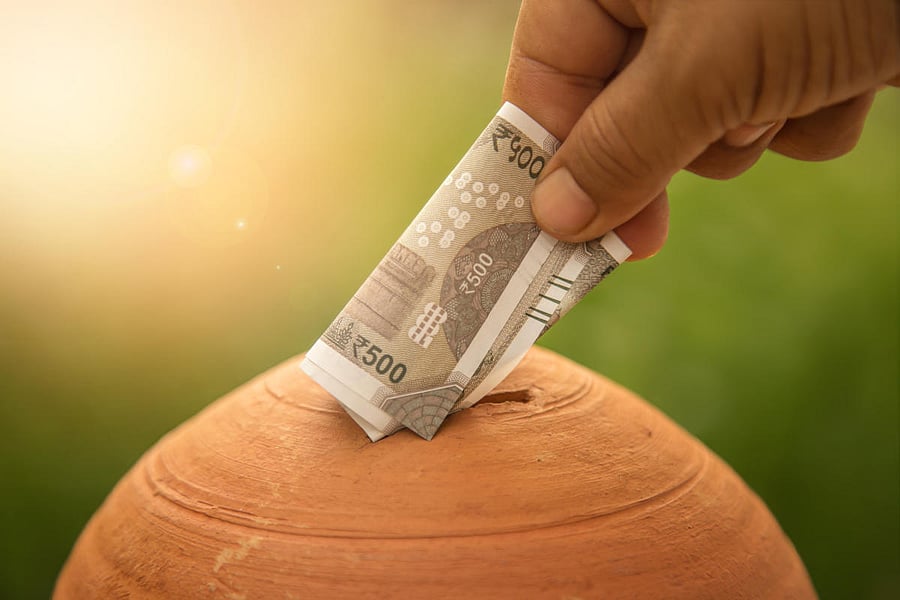The RBI Annual Report, 2019 indicates a steady increase in Depositors’ Education and Awareness Fund (DEAF) with the central bank representing the amount of “unclaimed deposits” transferred by banks.
As on June, the amount went up to Rs 25,747 crore – an annual increase of 32%. From 2015 to 2019, the Compounded Annual Growth Rate comes to 34.5%. Till 2014, these deposits were with the respective banks.
The Fund is also utilised for promotion of depositors’ interest and for such other purposes which may be necessary for the promotion of depositors’ interests. On a monthly basis, banks transfer “unclaimed deposits” with up to date interest to DEAF. The unclaimed deposits mainly include savings/current accounts without any customer-induced transaction for 10 years, fixed/term deposits/cumulative/recurring deposit/other deposits in any form not claimed for 10 years from the maturity dates.
Banks send communication to the customers but still, many times, customers do not respond. Depositors do not claim the deposits for variety of reasons: inability of banks to communicate because of incomplete address, non-availability of present contact numbers, using different style/names (not necessarily benami), forgetting/not tracking the deposits especially when the depositors bank with multiple banks/shifts their residence frequently, not sharing the details with family, legal heirs/nominees unaware of the deposits (when the depositor dies) etc.
Banks display the list of unclaimed deposits on their websites - only names of the account holder(s)/address with “find” option is provided. For non-individuals, name of the authorised person is also provided.
The account number, deposit type and the name of the branch etc, are not disclosed. The claim process, forms/documents for claiming are made available.
If anyone has a hint of the bank where his own “unclaimed deposits” or that of parents/grant parents/other relatives are kept, they can search the bank’s website and initiate action to get a refund. If the demand for reimbursement is received, banks repay with applicable interest and lodge a claim for a refund from the Fund. The RBI refunds the amount with savings interest (3.5%) from the date of receipt of the amount. If claim for refund is for foreign currency denominated deposits, the refund of amount from the Fund is in rupees.
Figures from top three PSUs and private sector banks (Annual Reports 2018-19) are considered to know the transfer to the Fund compared to reimbursements. SBI has shown a year-on-year growth of 34% to Rs 2,853 crore – fresh transfer Rs 737 crore and reimbursements Rs 9.61 crore (only 0.45% of the previous year outstanding).
In Punjab National Bank, the figure is Rs 1,932 crore, fresh transfer Rs 412 crore and reimbursements Rs 47.4 crore (3.02%). Bank of Baroda has shown growth of 43.35% to Rs 615.41 crore - the aggregate amount.
The position in top three new-generation private banks, having a much lesser legacy when compared to PSBs, is not substantially different. In ICICI Bank, the outstanding was Rs 833 crore (25% growth), HDFC Bank Rs 497 crore (35% growth) and Axis Bank Rs 162 crore (66% growth).
In all these six banks together, fresh transfers come to Rs 1,712 crore, reimbursements mere Rs 73.4 crore and the increase in aggregate amount 31.2%, (DEAF-RBI -31.58%).
The attempts by banks to locate the depositors or nominee/legal heirs (in case of deceased depositors) and refund, the amount before transfer to DEAF is either not enough or simply banks are unable to contact them.
With the requirements of stricter KYC since 2005, as against the earlier practice of opening accounts with a mere introduction, banks may be in a position to track the customers and initiate steps to refund.
As a business strategy, banks can have special campaigns to identify the beneficiaries and reimburse the amount.
“Customer first”
More than anything else, when banks proclaim “customer first”, banks should exhibit concern about the depositors by ensuring refund to the rightful person – instead of transferring/allowing to keep the amount with RBI.
The RBI keeps the amount under DEAF in domestic securities yielding returns while the direct cost is only 3.5%, that too only when reimbursements happen. Is it not desirable to identify the reasons for continuous increase in DEAF (with negligible reimbursements) by appointing some working group at RBI/IBA/any other similar authorities?
Why can’t the details of unclaimed deposits of all banks be made available in a single point to facilitate easy identification?
Performance index should be in terms of reimbursements, reduction in further transferring of funds and thereby bring down the amount. Efficacy of any system is to be evaluated in terms of the results – not by the process put in place.
Facilities provided to identify/claim unclaimed deposits prima facie appears to be fine and at the same time, judged by the experience in the very low quantum of reimbursement, one may feel that “operation success; but the patient is dying”.
(The writer teaches banking at ICICI Manipal Academy, Bengaluru)
